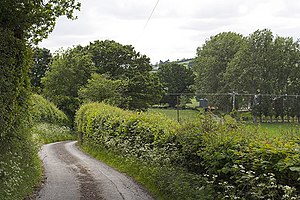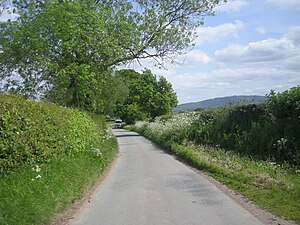Roads in Great Nortend
Roads or public thoroughfares are an indispensable part of the Nortish civil infrastructure. Though Great Nortend relies less heavily on its road network for long-distance travel than many other countries, preferring rail travel instead, road transport remains crucial for short to medium distance journeys.
Motor vehicles make up only around a quarter of the total number of vehicles registered in Great Nortend, with various forms of horse-drawn waggon, cart or carriage forming the bulk of private vehicular registrations in the country. Many motor vehicles are public vehicles, such as taximeter and omnibus carriages or vans and lorries used for commerce, logistics or trade. Private motor carriages are relatively rare in Great Nortend and mainly the preserve of the rich, owing to the high cost of registration and driver licensing.
Roads and highways
The Roads and Highways Act is primarily concerned with the allocation of responsibility for the building and upkeep of thoroughfares, and the law that relates to travel thereupon. All public thoroughfares for vehicular traffic are considered „roads” while some more significant roads have the status of a „highway”.
A highway is a public thoroughfare which provides a relatively straight and often flat, metalled road surface, typically linking towns and cities. The most significant highways are the numerous highways through the Monmorians. Historically tolled highways were common through Great Nortend, especially during the 18th and 19th centuries, however with the increase in rail transport, they have gradually lost their profitability and many have been turned into public thoroughfares. Highways are „owned” by the Crown and are maintained by the Board of Highways, under Office of Works. Ordinary roads, which may be lanes, streets, droves or any number of other roads, are maintained by local parish vestries or councils and usually have gravelled or even dirt surfaces.
There is a maximum open road speed limit of 60 m.p.h. However, many roads have lower limits owing to poor visibility.
Number plates
Number plates are required in Great Nortend for all motorcars, vans, lorries, horse-drawn carriages, coaches, carts, waggons and other such vehicles when used on public roads. Most number plates are made from enamel-painted pressed steel or iron.
General Purpose number plates
General Purpose number plates are the standard issue number plate, being black on white at the front of the vehicle and white on black at the rear. The number plate format for general purpose number plates is NNN(...)·C
C where N... are numbers issued consequentially, and C
C the issuing authority county code.
Hire carriages
Hire carriages have a green on white number plate bearing the letters H
C. Hire carriages include taximeter cabriolets, Hackney carriages and other 'taxi' vehicles, but do not include hire vehicles. Instead of single separator dots, double dots are used.
Omnibus carriages
Omnibus have white on green number plates in a similar fashion to hire carriage number plates. Omnibus and trolley omnibus carriages use the same number plates, which do not have a minimum number (e.g. 4 is used instead of 004 as for general issue number plates).
Corps Diplomatique
Diplomatic number plates, issued to diplomats from foreign countries, are gold on light blue, and are otherwise identical to general issue plates, save for the double separator dots and the use of C
D as the issuing authority code.
Police vehicles
Police vehicle number plates are white on royal blue. They are otherwise identical to general issue number plates, save for the use of a crown as the separator dot and the use of P
C, standing for Police Constabulary, as the issuing authority code
Military vehicles
Military vehicles are given number white on black number plates. The sequence is NN LL NN where N is a number and LL signifies the branch or corps issuing the number plate. A crown separates the two letters but no other separator is used.
Government and Crown vehicles
Official government number plates use a full-coloured crown with white text on black. Number plates are numbered in sequence, with the official carriage of the Prime Minister numbered 8 and, exempli gratia, a senior civil servant's chauffeured carriage at number 83.
The vehicles transporting the King or other members of the Royal family may use simply a crown as a number plate, in addition to the personal standard.



